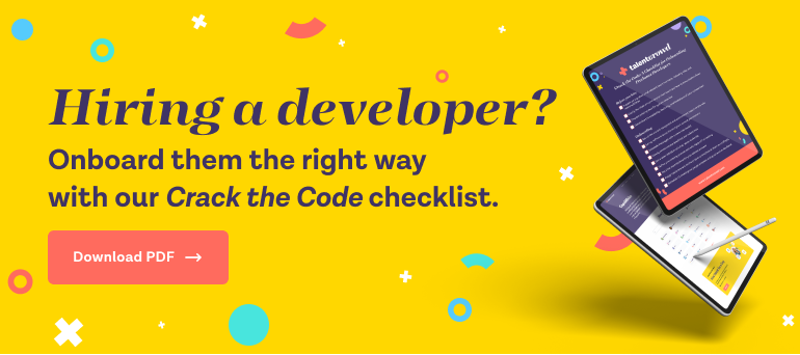You may have heard the term "The Great Resignation" at some point during the last few years. It is an ongoing trend where employees voluntarily resign from their jobs en masse. It started at the beginning of 2021, during the Covid-19 Pandemic. Since then, quitting rates have remained at record levels.
The Great Resignation is occurring around the world. In a global survey conducted by McKinsey & Company, 40% of workers report that they are planning to leave their current position. That means two out of every five employees intend on quitting.
Employee turnover has a significant impact on companies. On average, an employer spends the equivalent of six to nine months of an employee's salary on replacing them; for example, replacing an employee with a salary of $60,000 costs between $30,000 and $45,000. The expenses mainly arise from recruiting, hiring, and teaching new employee.
In addition to replacement fees, there are other costs that come with high turnover rates. Loss of productivity, increased workloads, and damage to morale often affect the remaining workers. As a result, it may lead to more employees resigning, which can become a vicious cycle.
The key to avoiding this pattern is to be proactive instead of reactive. This is where employee retention strategies play a major role. A strong employee retention plan supplies a roadmap to create lasting value for your employees proactively.
Putting together an employee retention plan is an ambitious task with high stakes. This article is here to help in your efforts! These six simple steps will guide you through the process so you can improve retention within your business. An employee retention plan template is also provided for your convenience.
Step 1: Analyze Your Current Retention Rates
The first step in creating an employee retention plan is getting honest about your current situation. Take a look at the hard facts. Knowing exactly where you are starting from is essential for making the right improvements.
Start by assessing your employee retention and employee turnover rates. These rates are usually reported as a percentage. This data can be calculated relatively easily if you do not have this data.
To calculate turnover rates, divide the number of separations by the average number of employees within a period of time. Then multiply that number by 100. The final percentage represents your turnover rate.
It can be helpful to look at the data from several time periods. At the minimum, you should calculate a monthly turnover rate and an annual turnover rate. Consider looking back five years or more, depending on the age of your company, because the historical data can be revealing. For even more insight, research the average turnover rate for similar companies and the industry as a whole.
Equipped with the knowledge of your current employee retention rate, you can move on to the next step.
Step 2: Evaluate Your Employee Value Proposition
Reviewing your employee value proposition is the second step for building an employee retention strategy. This is the balance of benefits and rewards your workers receive in return for the qualities, experience, and skills they bring to the workplace. It plays a significant role in job satisfaction.
An effective employee value proposition typically consists of five primary components:
- Financial Compensation
This goes beyond salary or hourly pay rate. It includes bonuses, stock options, and retirement matching. - Non-monetary Incentives
Non-cash perks vary within each organization. The most common include health insurance, vacation time, sick days, and flexible work arrangements. - Development and Training
This means that employees are offered growth opportunities. These opportunities usually involve mentorship, skills training, promotion opportunities, leadership education, and career guidance. - Positive Company Culture
The attitudes, beliefs, behaviors, and values of a company matter. Habits of a positive company culture might be to offer support at all levels, prioritize employees' well-being, and put policies in place that cultivate trust and respect. - Healthy Work Environment
This contributes to a positive company culture but has more effect on the day-to-day experience. A healthy work environment encompasses good communication, conflict resolution, team building, safe working conditions, recognition, and more.
Using the five primary components as a guide, consider all the benefits you currently offer your employees and make a thorough list. Include even the small gestures that might make your employees feel appreciated. If you need clarification on something, consulting human resources or talking to the managers may be helpful.
After you complete the list, you can start on the third step.
Step 3: Identify Your Strengths and Weaknesses
The first part of step number three is recognizing where you are succeeding in terms of retention. Do you offer a competitive compensation package compared to others in the industry? Does the company have a thriving mentorship program? Are there family-friendly policies? Take note of the things you do well so you can continue to do them.
The second part is identifying the areas that need improvement. Do healthcare plans need to be reviewed? Have there been numerous breakdowns in communication? Do employees have all the tools they need? Any weaknesses you find will help to shape your employee retention strategy.
One of the best ways to accurately assess your strengths and weaknesses is to gather feedback from your employees themselves. A simple method would be to conduct surveys. Make sure that the responses are anonymous to encourage honest answers.
With your strengths and weaknesses identified, the fourth step can begin.
Step 4: Choose the Right Solutions
Step number four addresses the areas of weakness. This is when the real work begins. There are many different strategies to consider when making improvements. Some potentially powerful solutions are as follows:
Recruitment and Onboarding
The recruitment process has a significant impact on employee retention. One study found that 80% of employee turnover is due to bad hiring practices and decisions. Revitalizing your recruitment strategies can increase the odds of finding the right fit the first time.
Training and Development
Employees are more inclined to stay if they have plenty of professional development opportunities. Investing in your employees' careers and future ambitions will demonstrate they are valued and prioritized.
Compensation and Rewards
For pay and benefits to be competitive, they must be evaluated and adjusted regularly. If pay increases are not feasible, other benefits such as one-time bonuses or paid time off can be just as rewarding. Improving compensation can keep your employees motivated and help them feel appreciated.
Work-Life Balance
A healthy work-life balance is closely tied to job satisfaction. It reduces employee burnout, which makes them less likely to leave. Promoting work-life balance can keep your employees happy and engaged.
Employee Engagement
Employees enjoy their work, take pride in their contribution, and feel satisfied with their jobs when there is a strong sense of connection. Highly engaged employees are 87% less likely to leave their positions. Improving employee engagement can have a positive impact on retention.
Management and Communication
Investing in managers is equally as important as investing in employees. Focusing on developing better coordination, stronger communication, and mutual respect can improve confidence in leadership and encourage employees to stay.
Your retention strategies will vary depending on your specific situation and areas that need improvement. After you have decided on the most impactful solutions, you can begin working on an action plan.
Step 5: Create a Plan of Action
Step number five is to come up with a practical course of action. Each specific strategy should be broken down into two parts to reach the desired outcome: an achievable goal and an actionable plan.
For example, if you want to improve your recruitment process, an achievable goal would be to educate your managers on unconscious bias. An actionable plan would be to provide a training course on the subject. The desired outcome would be to create a more inclusive recruitment experience, which can contribute to better retention rates.
It's important to consider all the small details, such as the budget or resources necessary for each tactic. If there is a set timeline or someone solely responsible for executing the plan, it should also be noted. For this part, focus on brainstorming rather than structure. It can all be structured clearly on an employee retention plan template later.
Your action plan can have as many goals and objectives as necessary for each strategy. The final step is to transfer your action plan onto the employee retention plan template.
Step 6: Develop a Final Document
Finally, all the work you put into the first five steps can be a final document. This document can be referenced and used as a playbook for employee retention. It should be accessed regularly to ensure it is being followed, still relevant to the current situation, and does not need improvements.
Below is an employee retention plan template you can use to create your final document. It can be changed to fit your strategies and situation.
Purpose: To create lasting value for our employees so they are motivated, happy, successful, and empowered to reach their full potential.
Strategy #1: Improve Employee Engagement
Goal: Build employee relationships.
Plan: Provide a team lunch every other Friday.
Budget: $350 per month
Team Member Responsible: Hailey
Desired Outcome: The team spends time together without focusing on work to allow for casual conversations and a sense of belonging.
Strategy #2: Improve the Recruitment Process
Goal: Encourage employee referrals.
Plan: Create an employee referral program with rewards for successful hires.
Budget: $1,000 cash reward for each employee who successfully refers a new hire.
Team Member Responsible: Jake
Desired Outcome: Employees are incentivized to recommend quality candidates who are more likely to be strong fits for the company.
Strategy #3: Improve Work-Life Balance
Goal: Support breaks during the workday.
Plan: Supply the break room with complimentary snacks and drinks.
Budget: $200 per month
Team Member Responsible: Thomas
Desired Outcome: Employees can step away from their desks to get snacks or drinks throughout the day and socialize in the break room.
To Summarize
Effective retention requires time and effort, but the results are well worth it. With the right employee retention strategies, you can create lasting value for your employees, ultimately benefiting your business. The impact of an employee retention plan is powerful.
Creating an employee retention plan and following through with it can be daunting. Hopefully, these six steps and the employee retention plan template included will simplify the process.
One easy way to make the process more manageable is outsourcing your software development to Talentcrowd. Talentcrowd is a cost-effective hiring platform that matches qualified, talented developers to your projects. They take over all organizational and administrative hassles so you can focus on your current employees and core responsibilities, such as employee retention.
Although the Great Resignation is an ongoing trend, it does not have to be true within your company. This article is a solid place to start. By following the six steps, you can improve employee retention and significantly impact your employees and your business.
Contact Talentcrowd today to outsource your software development and free yourself up to focus on other core responsibilities.




